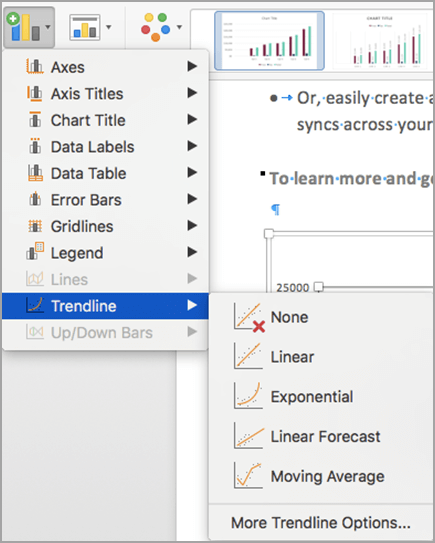

A linear trendline usually shows that something is increasing or decreasing at a steady rate. Your data is linear if the pattern in its data points resembles a line. If you want, you can display this value on your chart.Ī linear trendline is a best-fit straight line that is used with simple linear data sets. When you fit a trendline to your data, Graph automatically calculates its R-squared value.

Trendline reliability A trendline is most reliable when its R-squared value is at or near 1. The type of data you have determines the type of trendline you should use. Still need help? Go to Microsoft Community.When you want to add a trendline to a chart in Microsoft Graph, you can choose any of the six different trend/regression types. In the Decimal places box, increase the number of decimal places to 30 so that you can see all the decimal places.Select the Number tab, and then select Number in the Category list.On the Format menu, click Selected Data Labels.In the chart, select the trendline equation.

To work around this behavior, increase the digits in the trendline equation by increasing the number of decimal places that are displayed. This can cause a trend to appear to be incorrect. However, the accuracy of the chart is significantly reduced. This behavior allows the equation to occupy less space in the chart area. For appearance, each X value is rounded off to the number of significant digits that are displayed in the chart.

Microsoft Excel plots trendlines incorrectly because the displayed equation may provide inaccurate results when you manually enter X values. Therefore, the trendline will be inaccurate if it is displayed on these types of charts. In these chart types, the X axis is plotted as only a linear series, regardless of what the labels actually are. Line, Column, and Bar charts plot only the Y axis as values. This chart plots both the X axis and Y axis as values. The trendline formula is used for an XY Scatter chart.


 0 kommentar(er)
0 kommentar(er)
